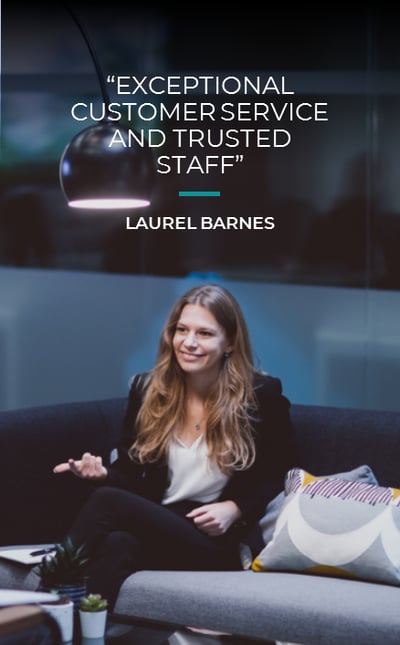Is your office design having a negative effect on your employees' mental health? Nearly a third of all UK businesses now say that mental health is a bigger issue than physical illness among employees, with record numbers claiming on their insurance for mental health treatment.
Considering that the average person spends a third of each day at their workplace, it's easy to see how the physical space around them can have a significant impact on their overall wellbeing. Workplace experts the Leesman Index found that only 46% of UK employees felt their workplace enabled them to work productively.
So how can you design a workplace that supports mental health, promotes productivity and inspires creativity? Here are some of the key areas you can look to adjust...
Lighting
Many offices struggle to find the right lighting balance; more than a quarter of employees work without natural daylight, with many offices using harsh fluorescent lighting as a replacement. Natural light is the ideal solution, helping to reduce stress levels, enhance alertness and provide stimulation throughout the day.
When choosing an office or making changes to your current one, consider floor-to-ceiling windows, skylights and glass panels or translucent partition walls. If these simply aren't possible, think about how you can arrange the seating layout to position people closer to sources of natural light, or introduce softer lighting that doesn't strain the eyes, like LED.
Designated break areas and collaborative spaces
People can easily feel like work is getting on top of them, and a study found less than half of those asked felt they were encouraged to take contracted lunch breaks. This pressure can cause massive stress, which means it's essential to have somewhere that employees can go to get away from their desk.
Designated break areas are perfect for this - simply somewhere with a table and chairs is enough to give people the chance to relax, or you could provide lunch and leisure facilities with a coffee machine, vending machine, ping pong table or a TV. Collaborative spaces where employees can go to have meetings or brainstorm are also beneficial, allowing them to work in different ways.
Air quality and temperature
Poor air quality can cause illnesses linked to respiratory conditions, which can impact both physical and mental health. The heating, ventilation and air conditioning systems need to be checked regularly, with temperatures kept at an optimum level to ensure no one is too hot or too cold. A simple way to improve air quality is to introduce houseplants that are easy to care for, such as peace lilies, spider plants and aloe vera, which are also known to improve well-being and raise job satisfaction.
Interior design, facilities and layout
A clean and spacious design can make a huge difference to how people feel when at work. Keeping desks tidy and free of clutter is essential, so providing drawers and storage areas will help keep things organised. You could even implement colour psychology, where research has shown how certain colours can impact our mood and behaviour: green to boost creativity, blue to improve focus or yellow to promote innovation.
Read more about how colour psychology can affect productivity and creativity.
The set-up of everyone's desk should be assessed on an individual basis to avoid poor posture and strained eyes, ensuring each employee has the right chair and knows how to sit correctly, with screens positioned at eye level. The layout of desks is also important; employees need enough personal space so as not to feel overcrowded, with plenty of room to move about easily.
Consider how your employees communicate and design the space to facilitate and encourage interactions: face-to-face socialisation promotes productivity, while also fostering work-based relationships that will help employees feel content and connected to their workplace.

Image Source: Pixabay
To create a truly calm and balanced workspace, why not consider how you can draw from the Buddhist philosophy of Zen? Check out our blog about how a Zen room can enhance employee productivity.
Header Image Source: Unsplash

